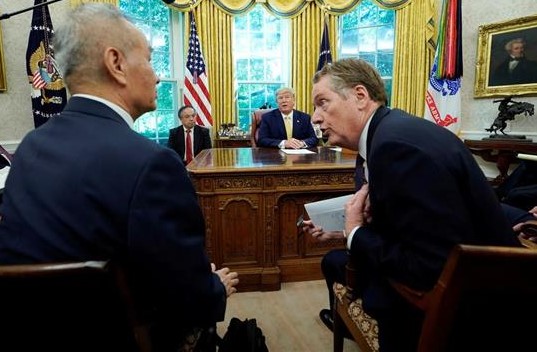In a bold and potentially game-changing move, former President Donald Trump is gearing up for a second term. Trade policies are set to take center stage in his agenda. Having left an indelible mark on U.S. trade during his initial presidency, Trump’s return promises a resurgence of protectionist measures. These measures have the potential to reshape global economic dynamics.
Trump’s Tariff Agenda
Trump, often referring to himself as “Tariff Man,” is eyeing an aggressive stance on trade, particularly with China. His proposed plan includes a universal 10% tariff on all imported goods, with reciprocal tariffs on nations imposing higher rates—a strategy he succinctly terms “an eye for an eye, a tariff for a tariff.” The primary focus remains on China, where Trump aims to revoke normal trading relations, potentially affecting a wide array of products, from toys to industrial materials.
Lighthizer’s Influence
At the forefront of Trump’s trade resurgence is Robert Lighthizer, the mastermind behind the former president’s first-term trade agenda. Lighthizer, a seasoned steel industry trade lawyer, anticipates an active role in a second Trump administration, expressing concern over the soaring trade deficit, which surpassed $1 trillion in 2022. His proposed remedies include denying China favorable tariff rates, imposing carbon fees on imports, and leveraging Section 301 of the U.S. Trade Act.
Global Reactions
The international community is closely watching Trump’s trade maneuvers, with China urging the U.S. to abandon protectionist policies. European officials, notably Rupert Schlegelmilch, the European Commission’s director general for trade, have labeled Trump’s previous tariffs as “illegal.” They have also bemoaned the negative impact on EU-U.S. relations.
Economic and Political Ramifications
Trade analysts warn that implementing Trump’s proposed tariffs could spell economic turmoil. While some U.S. industries may gain protection, others could face increased costs for imported materials, potentially leading to inflation. Trump’s 301 tariffs on China did not significantly reduce the trade deficit but did reshape trade dynamics.
NYT Digital: 3-Year Subscription, 70% Off!
Biden Administration’s Dilemma
The Biden administration, grappling with the legacy of Trump’s trade policies, has retained most of the tariffs. A review of the Section 301 levies implemented during Trump’s administration is currently underway. Discussions are ongoing regarding potential tariff increases on Chinese-made electric vehicles, among other goods.
WSJ Digital: 5-Year Subscription, 70% Off!
Economic Projections and Concerns
Estimates from the Tax Foundation, a nonpartisan research organization, suggest that a universal 10% tariff could significantly raise the tax burden on American consumers and businesses, potentially shrinking the U.S. economy by 0.5% and leading to the loss of over half a million jobs.
The stage is set for a potential return of Trump’s disruptive trade policies, and the global economic landscape braces for uncertainty. Implications that could extend far beyond U.S. borders are in focus.

